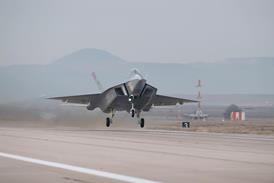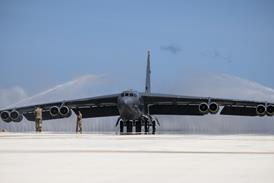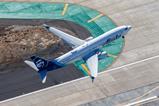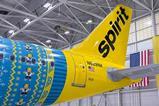With Airbus and Boeing recently downplaying the likelihood of launching development of next-generation aircraft platforms anytime soon, many within the airline industry are looking at Brazilian airframer Embraer as a potential third player in the large narrowbody market.
Chief executive Francisco Gomes-Neto continues, as he has for months, to downplay Embraer’s willingness to take an ambitious leap with its commercial unit. Speaking with FlightGlobal at the IATA annual general meeting in Delhi earlier this month, Gomes-Neto says his company in “focusing on selling the products we have”.
“Embraer had a very good year in 2024, in terms of financial performance,” he says, pointing to the company’s record $6.4 billion in revenue. “Deliveries this year will be even better.”
Embraer plans to generate $10 billion in annual revenue by 2030 and is guiding revenue of $7-$7.5 billion for the full year 2025.
“With the products we have, without eVTOLs, we have a good plan to grow the company and make the company even stronger, financially speaking, to fund new programmes in the future,” Gomes-Neto says.

That is essentially the same stance as Boeing’s, which maintains that bolstering financial health is necessary before launching a massively expensive and inherently risky new commercial aircraft platform.
Industry estimates suggest that developing a new airliner could come with a $10 billion price tag.
There is no guarantee that Embraer’s next jet would be aimed at the commercial market. Gomes-Neto says the airframer is studying possibilities such as a new, “maybe bigger” executive jet, as well as commercial and defence platforms.
“In parallel, we are investing a lot in new technologies,” he says. “We want technology readiness when we decide to [launch a new platform] – fuselage, wings, cockpit, everything. We are following technology trends, especially the engines. What would be the engines and what would customers expect for the future?
“We don’t have a concrete project yet,” he adds. “We are just making studies.”
Arjan Meijer, CEO of Embraer Commercial Aviation, says the company is “very honoured that airlines are speaking out, that they see us capable of building a bigger aircraft”.
“It’s good that the world sees Embraer as really on an upswing, whether you look at [production] output or cash generation,” he says. “But that’s not enough reason for us to jump into the water. We have to do our homework.”
Both Embraer executives emphasise the company is not standing still on introducing new products, as electric air taxi subsidiary Eve is poised to launch a flight-test campaign with its first full-size prototype later this year.
Meijer says “a big chunk of our engineers” are working on Eve’s development programme, which is leaning on Embraer’s technical and certification expertise.
Gomes-Neto says Eve’s prototype is nearly fully assembled at Embraer’s test facility in Gaviao Peixoto, Brazil.
“We are just waiting on some components to arrive, to fly the first flight,” he says.
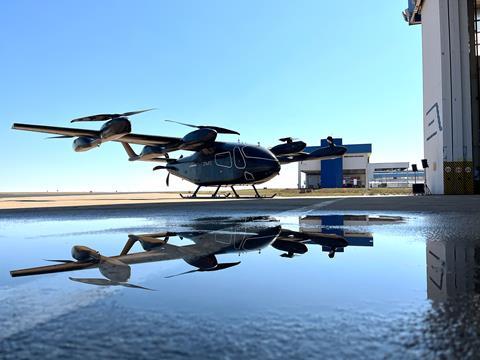
While that first prototype will be remotely piloted, Eve is also starting to build five-to-six production-conforming prototypes that will be used for certification flying with ANAC, Brazil’s civil aviation regulator.
Eve is still pushing to achieve certification of its four-passenger electric vertical take-off and landing (eVTOL) vehicle in 2027, and for it to enter revenue-generating service shortly after.
An industrialisation plan is already underway, with Eve considering the “whole ecosystem” necessary to safely launch a commercial air taxi network through its urban air traffic management software solution, known as Vector.
Meanwhile, the company, which boasts the highest number of pre-orders of any air taxi-start-up, is seeking to convert hundreds of letters of intent into firm orders.
“It’s not a small feat, right? It’s a small vehicle, but it’s a big challenge,” Meijer says.
A full-size mock-up of Eve’s air taxi will make its worldwide debut during the Paris air show. Embraer’s KC-390 and “Tech Eagle” E195-E2 aircraft will again feature prominently in Le Bourget.
Gomes-Neto considers the Paris air show an opportunity to reinforce Embraer’s brand and products with customers, and says “we expect to have a very exciting show, as usual”.
“We hope to receive a lot of delegations to talk about new programmes and new opportunities with the KC-390, and we want to talk about commercial and Eve, as well.”






